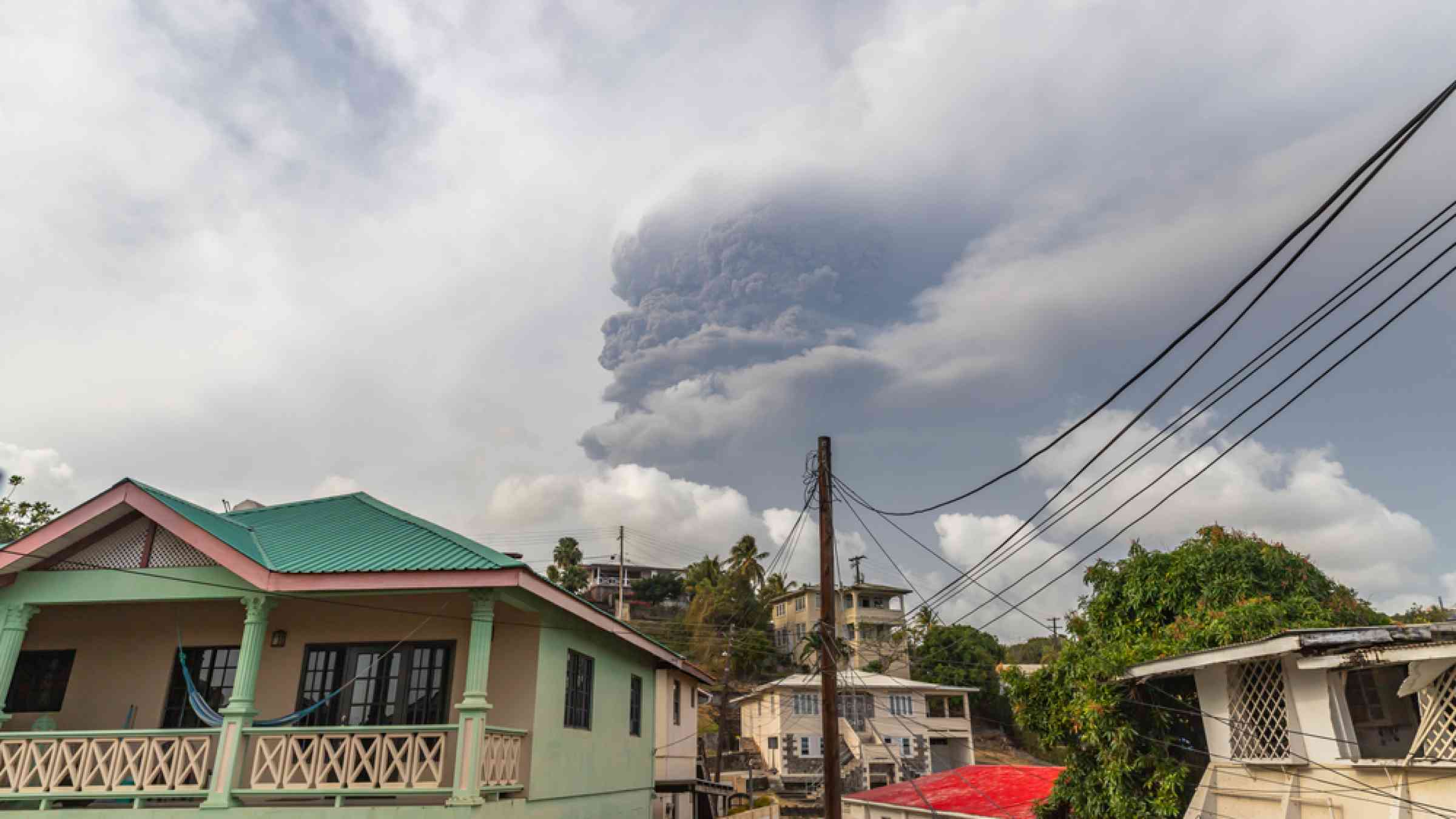Caribbean business swoops in with support for St. Vincent after volcanic eruption

After ash from La Soufriere volcanic eruption blanketed St Vincent and the Grenadines (SVG), businesses from across the Caribbean have rushed to lend support to the stricken country where homes have been destroyed, people displaced and water contaminated.
From mobilizing cruise ships to help relocate people to providing food, clothes and communications, businesses have played a vital role in both SVG and neighboring affected countries, despite complications caused by COVID-19.
“The success of disaster risk reduction strategies depends on the inclusion of various national sectors and stakeholders,” said Raul Salazar, head of the United Nations Office for Disaster Risk Reduction (UNDRR) - Regional Office for the Americas and the Caribbean. Ensuring the private sector plays an active role is core to the Sendai Framework for Disaster Risk Reduction (2015-2030), which proposes an inter-sectoral approach to risk, he said.
Since the April 9 eruption, members of the Caribbean Chambers of Commerce (CARICHAM) network have coordinated with their local counterparts to help distribute water, masks, soap and hygiene products.
The Trinidad and Tobago Chamber of Energy helped organize the distribution of 24,000 gallons of water and first aid medical supplies. The British Virgin Islands chamber focused on distributing toys to help children cope emotionally and psychosocially through the emergency.
Some businesses have played an important role in safeguarding and accommodating people unable to return to their homes after the eruption that covered SVG in millions of cubic meters of ash. While some people chose to move to safer areas, others opted to evacuate so private sector businesses helped negotiate the use of cruise ships to help people leave the island swiftly and safely.
To back-up the island’s rapid response plan, telephone companies, such as Cable & Wireless handed out credits and facilities to use throughout the emergency.
Elsewhere, the Caribbean Disaster Emergency Management Agency (CDEMA) has worked with the financial sector to help manage donations to help St. Vincent recover from the crisis.
SVG now expects to finalize its national plan for the integral management of disaster risk in the second part of the year. Through this strategy, it wants its own private sector to play an active role in areas such as operational preparation and building community resilience. By finalizing their national plans, some Caribbean countries around the Caribbean are meeting Target E of the Sendai Framework which ensures countries have national and local disaster risk reduction strategies in place. Almost all countries in the region now have plans in place, albeit at varying stages, to minimize the impact of disasters by reducing casualties and economic losses.